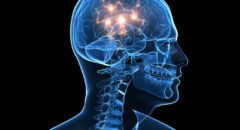
What is Bipolar Disorder?
Bipolar disorder used to be known as manic depressive disorder. It’s a serious illness, one that can lead to risky behavior, damaged relationships and careers, even suicidal tendencies — if it’s not treated.
Bipolar disorder is characterized by extreme changes in mood (poles) — from mania to depression. Between these mood swings, a person with Bipolar disorder may experience normal moods.
“Manic” describes an increasingly restless, energetic, talkative, reckless, powerful, euphoric period. Lavish spending sprees or impulsive risky sex can occur. Then, at some point, this high-flying mood can spiral into something darker — irritation, confusion, anger, feeling trapped.
“Depression” describes the opposite mood — sadness, crying, sense of worthlessness, loss of energy, loss of pleasure, sleep problems.
But because the pattern of highs and lows varies for each person, bipolar disorder is a complex disease to diagnose. For some people, mania or depression can last for weeks or months, even for years. For other people, bipolar disorder takes the form of frequent and dramatic mood shifts.
What are the Symptoms?
The primary symptoms of bipolar disorder are dramatic and unpredictable mood swings. The illness has two strongly contrasting phases.
In the manic phase:
• Euphoria or irritability
• Excessive talk; racing thoughts
• Inflated self-esteem
• Unusual energy; less need for sleep
• Impulsiveness, a reckless pursuit of gratification — shopping sprees, impetuous travel, more and sometimes promiscuous sex, high-risk business investments, fast driving
• Hallucinations and or delusions (in cases of bipolar disorder with psychotic features)
In the depressive phase:
• Depressed mood and low self-esteem
• Low energy levels and apathy
• Sadness, loneliness, helplessness, guilt
• Slow speech, fatigue, and poor coordination
• Insomnia or oversleeping
• Suicidal thoughts and feelings
• Poor concentration
• Lack of interest or pleasure in usual activities
Diagnosis
A bipolar disorder diagnosis is made only by taking careful note of symptoms, including their severity, length, and frequency. The most telling symptoms of bipolar disorder include severe mood swings (going from extreme highs to extreme lows) that don’t follow a set pattern.
The psychiatrist will ask questions about personal and family history of mental illness. The doctor will also ask detailed questions about symptoms, including how long they last and how frequently they occur. Other questions will focus on reasoning, memory, ability to express oneself, and ability to maintain relationships.
Blood and urine tests — such as a toxicology screening — may be done to rule out other causes of symptoms. In a toxicology screening, blood, urine, or hair are examined for the presence of drugs. Blood tests also include a check of thyroid stimulating hormone (TSH) level, since depression is sometimes linked to thyroid function.
Treatment
The exact causes of bipolar disorder are unknown. While genetic vulnerability and life stress are involved in triggering it, experts believe that an underlying imbalance of brain chemicals produces the symptoms. When levels of these chemicals are too high, mania occurs. When levels are low, there is depression.
This biological understanding of the disorder has opened doors for targeted treatments.
The best treatment is a combination of medication and counseling, although electroconvulsive therapy (ECT) is often successful for people who don’t respond to traditional therapy or who can’t take the medications.
Doctors often treat the mania symptoms with one set of drugs, and use other drugs to treat depression. Certain drugs are also used for “maintenance” — to maintain a steady mood over time. Antidepressants are usually not used alone because they may cause manic attacks in depressed patients.
Most people respond well to medications for bipolar disorder. For many others, the symptoms do not completely disappear despite therapy. The moods may become less intense and more manageable, however.
Remember, getting your diagnosis should come as a relief. Now you know what the problem has been and you’re on the road to getting the right treatment.
Mania
If you are suffering from mania, your doctor initially may treat you with an antipsychotic drug and/or a benzodiazepine to quickly control hyperactivity, sleeplessness, hostility, and irritability.
Your doctor will also likely prescribe a mood stabilizer. Mood stabilizers help control mood swings, prevent recurrences of mood swings, and reduce the risk of suicide. They are usually taken for a long time, commonly for many years. Examples include lithium and certain anticonvulsant drugs.
Treatment of mania often requires hospitalization because there is high risk for unpredictable, reckless behavior and noncompliance with treatment. For people with extreme mania, pregnant women with mania, or those people whose mania can’t be controlled with mood stabilizers, doctors sometimes also recommend electroconvulsive therapy (ECT).
If mania occurs while on maintenance therapy, your doctor may simply change your medication dose. Or you may start taking an antipsychotic drug to lessen symptoms.
Nondrug treatments, such as psychotherapy, and establishing a well-ordered routine may help patients in their maintenance phase. This is often suggested along with medication.
Depression
Treating a depressive episode in bipolar disorder is controversial and challenging. Using antidepressant medication alone is not recommended because the drugs may flip a person into a manic or hypomanic episode. Hypomania is a more subdued version of mania. Antidepressants alone also may lead to rapid cycling. In rapid cycling, a person may recover more quickly from depression — but may experience mania and then another episode of depression.
Note: In October 2004, the FDA determined that antidepressant medications can increase the risk of suicidal thinking and behavior in children and adolescents with depression and other psychiatric disorders. If you have questions or concerns, discuss them with your health-care provider.
In April 2002, the American Psychiatric Association suggested using lithium or the anticonvulsant drug Lamictal as an initial treatment for people in the acute depressive phase of bipolar disorder who were not already taking a mood stabilizing medication. Sometimes Lamictal is added to lithium as well.








